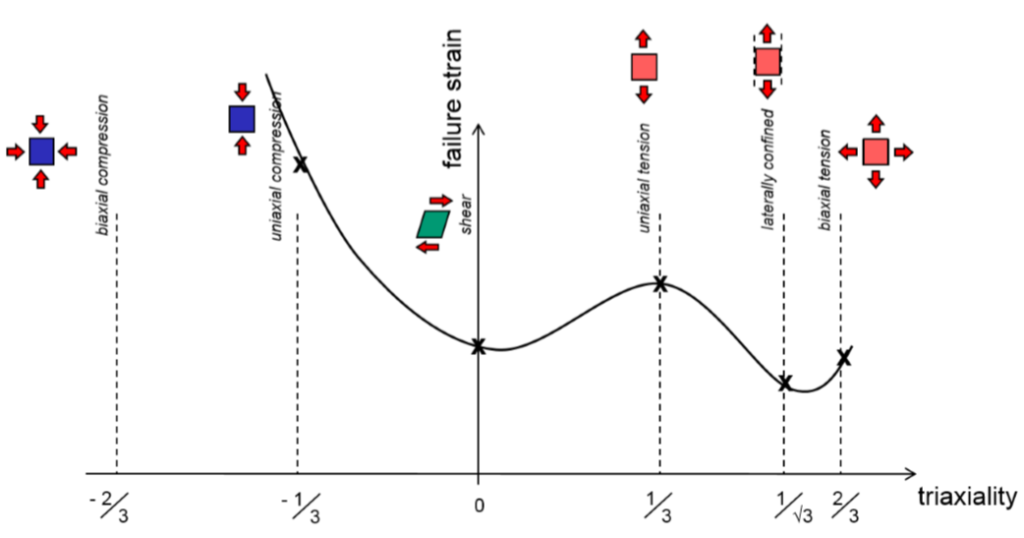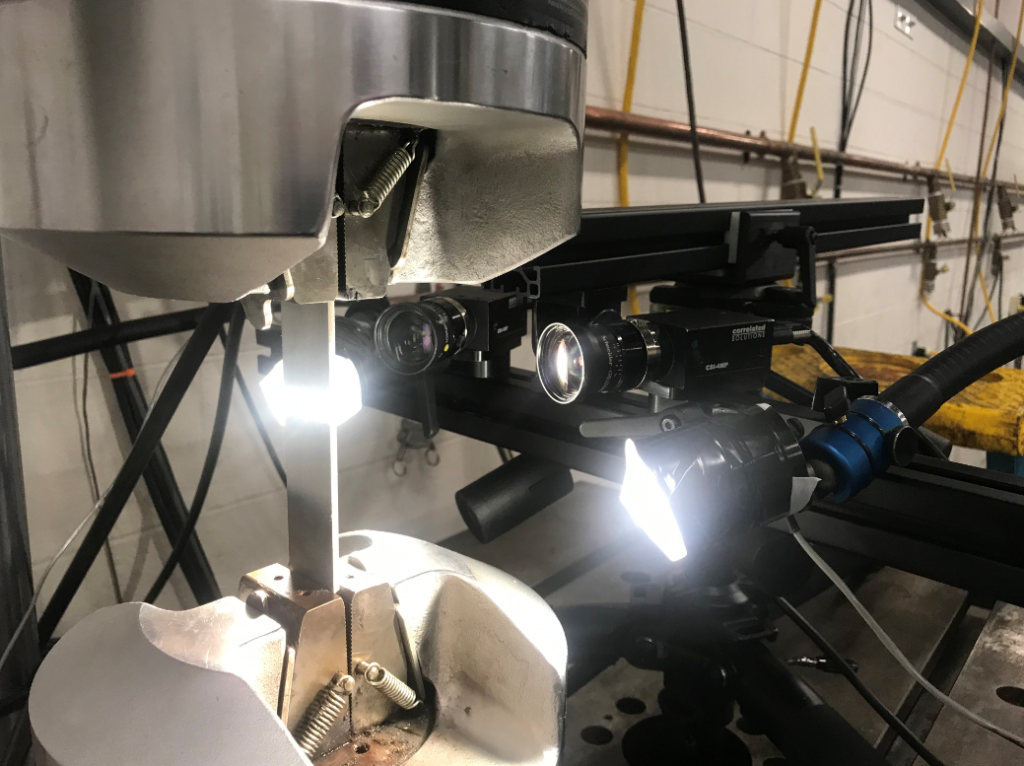
In the past, when low-cost ductile steels were used for most automotive structural components, cracking during crash events was uncommon and finite element analysis (FEA) models achieved good correlation without predicting material failure. With the adoption of high strength steels, aluminum, and magnesium alloys, damage models must now capture material failure so crumple zones and total energy absorption can be predicted accurately. Use of these new materials also highlights limitations of FLDs (Forming Limit Diagrams) when simulating the formability of stamping processes. The reduced ductility in these advanced materials has led to non-necking material failures in production that require an additional prediction tool.
Until recently, damage models required an unrealistic amount of testing, needed too much computation power, or were so simplistic that they could only be used for limited applications. Advancements in numerical modeling have merged with developments in CPU processing power and digital image correlation (DIC) technology to create damage models with a wide variety of applications. GISSMO (Generalized Incremental Stress State Dependent Damage MOdel) is one of the many triaxiality stress-based damage criteria that are now being adopted by industry.
Triaxiality stress is the ratio of hydrostatic pressure to Von-Mises stress:

Physical testing is required to develop the various triaxiality values in the characteristic damage curve (Figure 1).

(credit: www.dynamore.de )
EWI has successfully implemented an efficient set of tests that utilizes tensile samples produced with EDM (electrical discharge machining) and DIC to establish the triaxiality limit curve (Figure 2). As with any damage model, a mesh regulation study is required to adjust the damage limit as a function of element size.

GISSMO is an especially useful and efficient triaxiality damage model because it can be used for both forming and crash simulation. In addition, improved crash performance can be achieved by exporting the formed part, with strain gradient, from stamping simulation for use in crash FEA. The additional strain hardening increases the energy absorption compared to a strain-free part so thatthe material fails in a realistic way that correlates well with the physical world.
If you are interested in learning more about how damage criteria can be used to improve failure prediction for your forming or crash simulations, please email Tom Feister at [email protected].